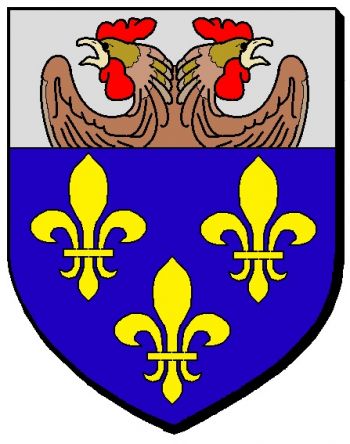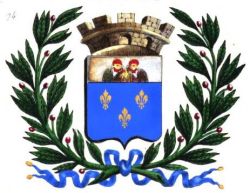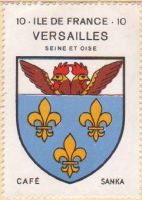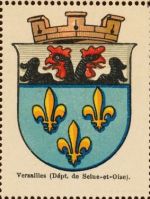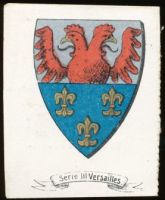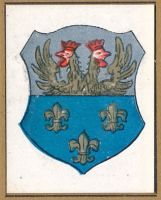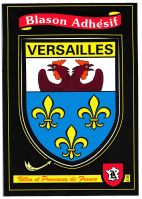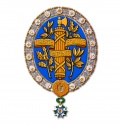Versailles: Difference between revisions
Knorrepoes (talk | contribs) m (Text replacement - "{{fr}}↵{{media1}}" to "{{fr}} {{media}}") |
Knorrepoes (talk | contribs) m (Text replacement - "<gallery widths=250px heights=200px perrow=0>↵" to "===Image Gallery=== <gallery widths=250px heights=200px perrow=0> ") |
||
| Line 25: | Line 25: | ||
The three fleur-de-lys are the French Royal arms and clearly indicate the Royal connections and the Royal palace. The meaning of the double-roosters in the chief is not very clear. The most likely hypothesis seems to be the symbol of vigilance represented by the two roosters, vigilance with which the municipality and the civic guard had to fulfill their double duty towards the King and the City. | The three fleur-de-lys are the French Royal arms and clearly indicate the Royal connections and the Royal palace. The meaning of the double-roosters in the chief is not very clear. The most likely hypothesis seems to be the symbol of vigilance represented by the two roosters, vigilance with which the municipality and the civic guard had to fulfill their double duty towards the King and the City. | ||
===Image Gallery=== | |||
<gallery widths=250px heights=200px perrow=0> | <gallery widths=250px heights=200px perrow=0> | ||
File:Versailles-tr.jpg|alt=Blason de Versailles/Arms (crest) of Versailles|The arms in Napoleonic times (Traversier, 1842) | File:Versailles-tr.jpg|alt=Blason de Versailles/Arms (crest) of Versailles|The arms in Napoleonic times (Traversier, 1842) | ||
Revision as of 08:05, 1 September 2023
|
Country : France Département : Yvelines |
| French | D'azur à trois fleurs de lis d'or; au chef d'argent chargé d'un coq bicéphale issant au naturel. |
| English | Per fesse argent and azure, in chief a demi-cock with two heads displayed proper issuing from the fesse line combed and wattled gules, in base three fleurs-de-lis or. |
Origin/meaning
The current arms have officially been adopted in 1944, but have been used since 1789.
The three fleur-de-lys are the French Royal arms and clearly indicate the Royal connections and the Royal palace. The meaning of the double-roosters in the chief is not very clear. The most likely hypothesis seems to be the symbol of vigilance represented by the two roosters, vigilance with which the municipality and the civic guard had to fulfill their double duty towards the King and the City.
Image Gallery
The arms in the Café Sanka album +/- 1932
The arms in the Wappen-Sammlung (+/- 1910)
The arms in an album +/- 1905
The arms in an album from 1930s
The arms on a tobacco card by Laurens
The arms in the Abadie albums
he arms on a postcard by Kroma
The arms in the floor of the local city hall (source)
French heraldry portal
This page is part of the French heraldry portal |
Heraldry of the World |
|
French heraldry:
Overseas territories:
|
Selected collector's items from France:
|
Contact and Support
Partners:
Your logo here ?
Contact us
© since 1995, Heraldry of the World, Ralf Hartemink 
Index of the site
